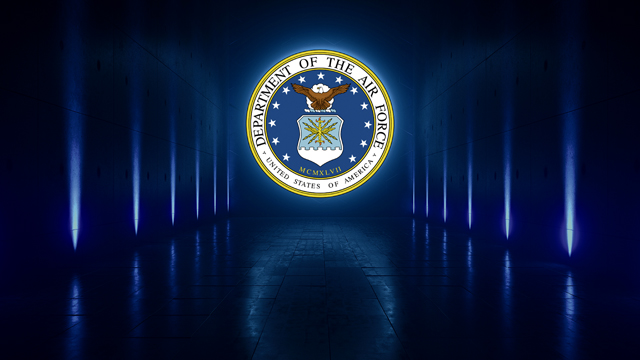 The Air Force announced 10 Airman leadership qualities which are now being integrated into a new feedback tool, for officers in the grades of O-1 through O-6 and senior noncommissioned officers in the grades of E-7 through E-9, to facilitate discussion between rater and ratee.
The Air Force announced 10 Airman leadership qualities which are now being integrated into a new feedback tool, for officers in the grades of O-1 through O-6 and senior noncommissioned officers in the grades of E-7 through E-9, to facilitate discussion between rater and ratee.
The qualities, found in the Airman Comprehensive Assessment Addendum – AF Form 724-A, focus on character and competence and are categorized under four major performance areas which coincide with both the major graded areas of the Air Force Unit Effectiveness Inspection program and the language used to describe expected performance factors provided to promotion boards: executing the mission, leading people, managing resources and improving the unit.
“The adjustments toward these new leadership qualities are imperative to shift the way we measure, incentivize, and reward the Airmen we need for the future,” said Air Force Chief of Staff Gen. Charles Q. Brown, Jr,. “We must have evaluation systems that provide constructive feedback, evaluate against qualities we value, and highlight future potential.”
The Airman leadership qualities are expected to form the basis for the future officer and enlisted performance reporting systems. The alignment between evaluating units and evaluating Airmen is intended to further emphasize and accelerate an understanding and adoption of the associated leadership qualities.
“The major performance areas and Airman leadership qualities were developed over the last two years by looking at industry and sister service best-practices, academic literature, and most importantly the attributes we know will be required of our Airmen. They were refined over a series of Total Force focus groups to develop and validate the qualities we value in our leaders,” said Col. Laura King, Air Force Talent Management Innovation Cell director. “We designed the addendum to be used in conjunction with the primary Airman Comprehensive Assessment form to serve as a guide for raters to help facilitate actionable discussions during feedback that incorporate the Airman leadership qualities.”
Each Airman leadership quality is assessed on a five-point scale of proficiency levels: does not meet expectations, developing, proficient, highly proficient and outstanding. They are currently grade independent, understanding raters will account for the relative expectation based on rank and Air Force specialty code.
Over the past two years, the Department of the Air Force has made several large-scale modifications to its talent management system. This initiative is part of a larger reform and the next step in the implementation of a more comprehensive evaluation system.
“To improve how we make talent management decisions, we must measure what we value. These Airman leadership qualities make clear what we value in officer and enlisted performance. Our Airmen must understand what they are being ‘graded’ against to provide them with a clear understanding of expectations and aid them in their future development,” said Lt. Gen. Brian Kelly, deputy chief of staff for manpower, personnel and services. “The objective is for raters to begin discussing and assessing ratees against the Airman leadership qualities to provide us feedback as they introduce the new measures they will see in future evaluation systems.”
Over the coming months, feedback will be gathered from major commands throughout the Air Force. The data collected will be used to refine the Airman leadership qualities and the addendum before the new evaluation systems are finalized. While initial use of the form will be optional, leaders are encouraged to use it to the maximum extent practical.
“We are working to build a system that defines the qualities we value and need in our Airmen,” said Chief Master Sgt. of the Air Force JoAnne S. Bass. “I’m very excited that we are doing that in synergy with our officer corps, it shows that we value Airman leadership qualities across the ranks, from E-1 to O-10.”
The major performance areas and Airman leadership qualities are:
Executing the Mission
- Job Proficiency: Demonstrates knowledge and professional skill in assigned duties, achieving positive results and impact in support of the mission.
- Initiative: Assesses and takes independent or directed action to complete a task or mission that influences the mission or organization.
- Adaptability: Adjusts to changing conditions, to include plans, information, processes, requirements and obstacles in accomplishing the mission.
Leading People
- Inclusion and Teamwork: Collaborates effectively with others to achieve an inclusive climate in pursuit of a common goal or to complete a task or mission.
- Emotional Intelligence: Exercises self-awareness, manages their own emotions effectively; demonstrates an understanding of others’ emotions, and appropriately manages relationships.
- Communication: Articulates information in a clear and timely manner, both verbally and non-verbally, through active listening and messaging tailored to the appropriate audience.
Managing Resources
- Stewardship: Demonstrates responsible management of assigned resources, which may include time, equipment, people, funds and/or facilities.
- Accountability: Takes responsibility for the actions and behaviors of self and/or team; demonstrates reliability and transparency.
Improving the Unit
- Decision Making: Makes well-informed, effective and timely decisions under one’s control that weigh constraints, risks, and benefits.
- Innovation: Thinks creatively about different ways to solve problems, implements improvements and demonstrates calculated risk-taking.
For additional information and details on the addendum, go to https://mypers.af.mil/.


